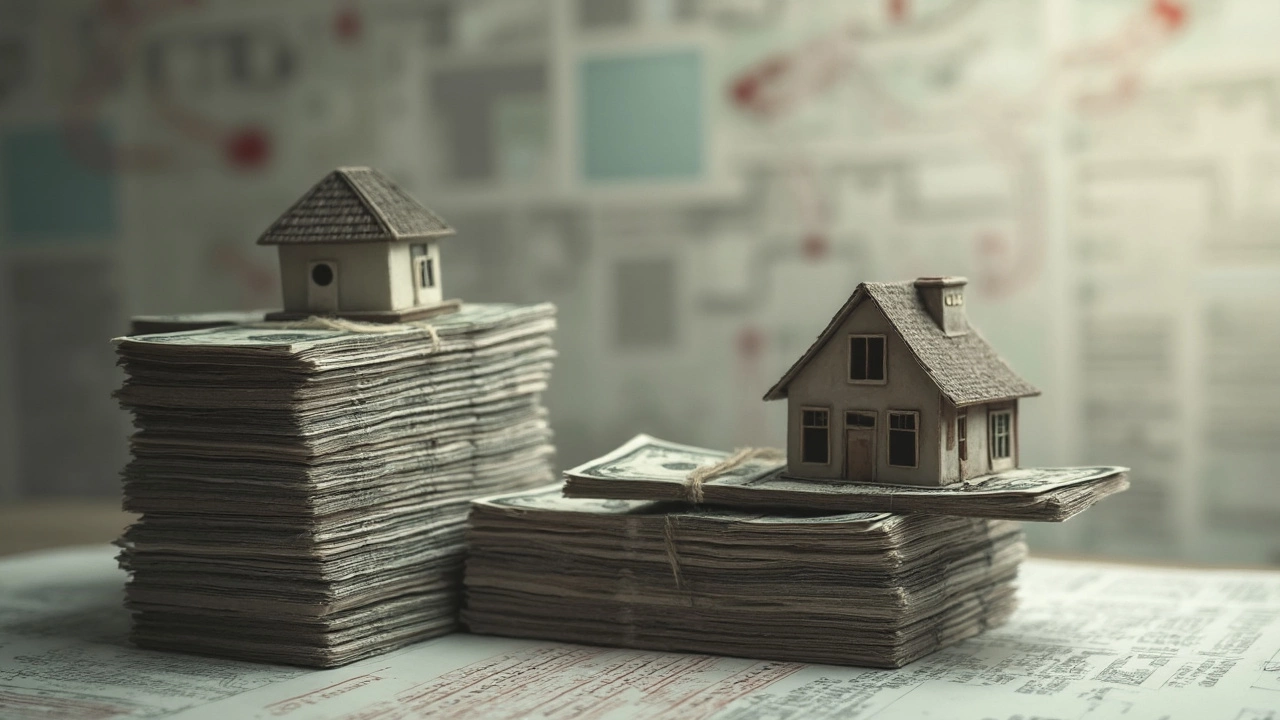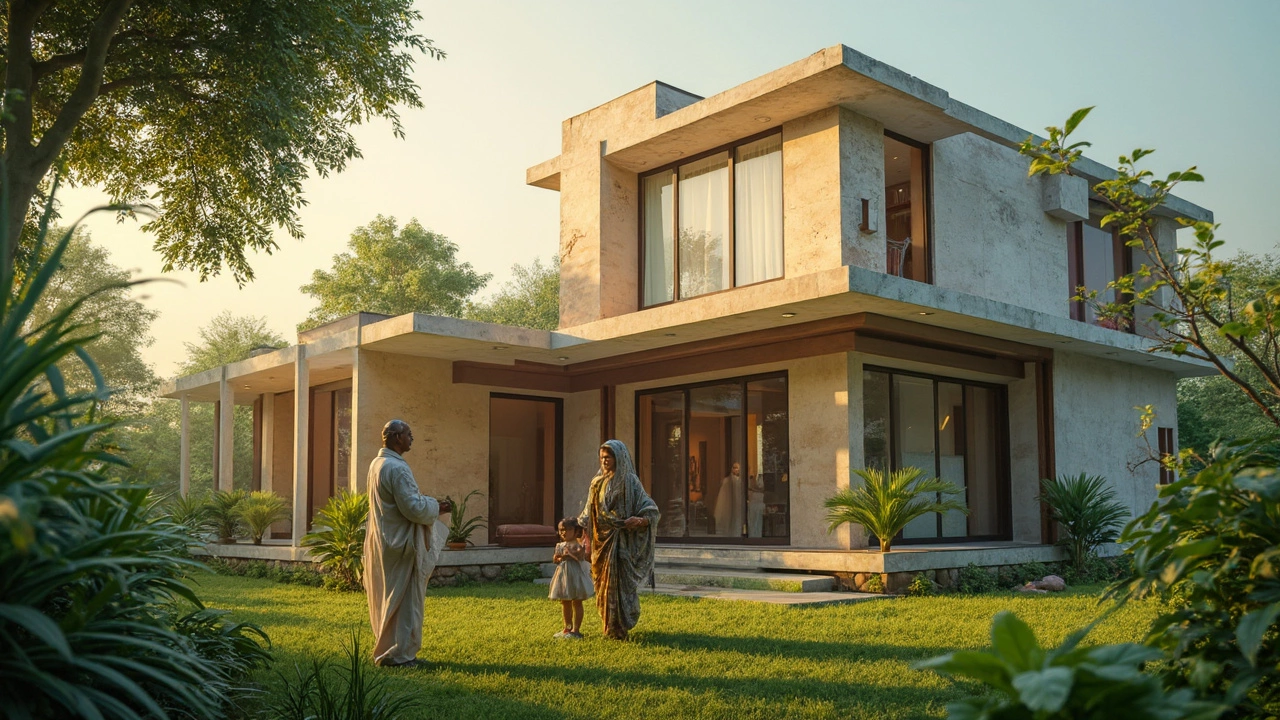Ever wondered why your dream of building a house feels a million miles away? Well, it's no secret—building a house these days can be crazy expensive. Let's talk about what’s driving up those costs so much.
First off, the price of construction materials is through the roof. Lumber, concrete, steel—everything's gotten pricier. A couple of years ago, everyone was talking about how lumber prices shot up. That's the kind of stuff that throws budgets out of sync.
Then you've got the labor. Sure, you can't build a house without the skilled folks, but it turns out skilled labor doesn’t come cheap. Finding the right people with the right expertise is half the battle, and paying them can be a big chunk of your budget.
- The Rising Cost of Materials
- Labor and Expertise
- Regulations and Permits
- Time is Money
- Smart Saving Tips
The Rising Cost of Materials
Okay, let's dig into why the prices for construction materials are through the roof. If you've been eyeing a new home, you've probably noticed that prices aren't what they used to be. The cost of building a house has shot up, and a big part of that is the skyrocketing prices of materials.
First, look at lumber. Back in 2020 and 2021, lumber prices went up by more than 200% due to pandemic-related disruptions and increased demand. Everyone suddenly wanted to renovate or build, and the supply just couldn't keep up. Although things have settled a bit, prices are still higher than a few years ago.
But it's not just wood. Think about steel and concrete, which are crucial for strong foundations and structures. China's demand for industrial goods impacts global prices. So, when China’s construction industry ramps up, prices can increase globally. In 2024, analysts noted a 15% increase in steel prices because of such factors.
Then there's shipping. Importing materials costs more thanks to rising fuel charges, trade tariffs, and delays in supply chains. This means builders might spend more just bringing materials in before the first nail is even hammered.
These rising costs are bad news for anyone dreaming of owning a new home. The materials that help create a sturdy, reliable house aren’t getting any cheaper anytime soon.
If you’re wondering if there's any way to cut these costs a bit, consider buying locally sourced materials which reduces shipping expenses, or even opting for alternative materials like bamboo or recycled metal that might be more budget-friendly.
Labor and Expertise
Alright, let’s tackle this big piece of the puzzle: labor. The folks who help build your house are a crucial part of the process, but they can also take a hefty slice of your budget. So, why is this part so costly?
First up, there's a real demand for skilled workers in the construction industry. With fewer people going into trades and more houses needing building, those who can wield a hammer or wire up an electrical panel are in short supply. That scarcity drives up costs because you’re competing with every other project out there. It's basic supply and demand, right?
Now, the expertise of these workers isn't something you can skimp on. You definitely want experienced folks on the job, whether it’s someone with years under their belt or a licensed professional who knows the ropes. Paying for quality ensures your house doesn’t end up being a risky investment due to poor craftsmanship.
Plus, don't forget about subcontractors—those are specialists for things like plumbing, electrical work, and roofing. They bring in their own crew and materials, and all that coordination can add time (and money) to the project.
And here's a little kicker: construction projects are notorious for running into delays, and delays mean more labor costs. If work gets paused because you’re waiting on materials or permits, you’re still paying those workers while everything’s on hold. Time really is money in construction.
| Year | Average Cost of Construction Labor (per hour) |
|---|---|
| 2020 | $30 |
| 2025 | $36 |
So, what’s the play here? Well, if you're trying to cut down costs, consider being flexible with your timeline. Hiring workers during less busy seasons might save you some cash. Also, make sure your plans are good to go before breaking ground—less redoing means less wasted time and money.

Regulations and Permits
Alright, let's dig into the nitty-gritty of why house construction isn't just a matter of hammer and nails anymore. When you're building a new home, it's not just about stacking bricks. There’s a heap of paperwork thanks to regulations and permits, and they can make things feel way more complex than you'd expect.
First, just about every new construction needs a building permit. It's like the green light from the local government letting you know it’s okay to start. But getting this permit is no joke. You'll often need detailed plans, environmental assessments, and sometimes even a review of the project's impact on local traffic or infrastructure.
Then, there are zoning laws. These dictate what you can build and where. Whether it’s residential, commercial, or something in between, your plot of land has rules about what goes up. Imagine finding the perfect spot to call home, only to learn that local laws say you can't actually build what you had in mind.
But wait—there's more! Ever heard of building codes? These are standards ensuring your house is safe and sound. Things like fire safety, plumbing, electrical systems, and structural integrity all need to meet specific criteria. Skipping on these could mean facing fines or, worst case scenario, having to redo work you’ve already paid for.
Here's a reality check: getting a grasp of permits and regulations isn't just a small line item—it's a significant chunk of the timeline and, sometimes, your budget. With several layers of bureaucracy, each step takes time and money, often blending into the entire process of building your dream home.
If you’re feeling a bit swampy, here’s a tip: hiring a good contractor familiar with local building costs and regulations can save you from a lot of headaches. They’ve navigated these waters before and can help ensure you’ve got all your bases covered. Because, let’s face it, most of us just want to fast forward to paint colors and furniture shopping!
Time is Money
When it comes to building a house, time honestly feels like it runs double-time, and oh boy, every extra day costs money. Let’s break it down.
First off, think about the delays. Weather can be a total nightmare. One week of heavy rain can throw the whole schedule off, and guess what? Those workers? They still get paid. Labor costs can balloon faster than we’d like when things don’t go according to plan.
And then there's the whole permitting game. Getting the right permits isn’t as smooth as people hope. A hiccup in paperwork can halt progress, leaving you paying for time lost and interest on construction loans that just keep ticking.
Here's a nugget for you: a study in 2023 showed that construction projects running over schedule accounted for nearly 20% higher costs than initially planned. Imagine expecting your home sweet home and realizing it's going to cost you so much more just because the timeline stretched.
To minimize these time-related headaches, follow some practical steps:
- Plan for Extra Time: Add a buffer to your schedule. If you think it’ll take six months, plan for eight. This takes pressure off and saves you from those surprise extended costs.
- Streamline Permits: Get ahead on permits and inspections. Talk with your contractor about accelerating this part of the process. Time spent here wisely is money saved later.
- Weather Watch: Work with a contractor that's savvy about local weather patterns. They’ll plan the build with the seasons in mind, reducing the risk of delays.
Remember, a well-prepared plan can save you more than just headaches. It’ll save less dented wallets too.

Smart Saving Tips
Want to save some bucks while building your dream home? It's not just about scrimping and saving but knowing where you can cut costs without cutting corners.
First up, consider the materials. Sometimes, looking for alternatives can make a world of difference. For example, using engineered wood instead of traditional lumber can save significant money and be just as reliable.
Next, try to be involved in the process. Don’t just leave it to the pros and chill in the background. Be there, ask questions, and see if there’s room to negotiate. A little DIY attitude sometimes shaves off costs.
“One of the best ways to manage costs is through detailed planning and a realistic budget,” says Martin Stevens, a respected home builder with over 20 years of experience in the field.
Check out local regulations, too. Sometimes, slight tweaks in your plan to meet local codes more economically can save not only money but also time. A little research beforehand goes a long way.
Here's a quick simple checklist of things you can do:
- Shop around for quotes—don’t just jump at the first price you get.
- Consider building during off-peak times when labor might be cheaper.
- Think about long-term savings, like energy-efficient materials which may cost more upfront but save later.
Planning a new home is like a puzzle. The more you know, the better your chances of coming out ahead. Remember, every penny counts, and smart choices add up to big savings.

Written by Fletcher Abernathy
View all posts by: Fletcher Abernathy